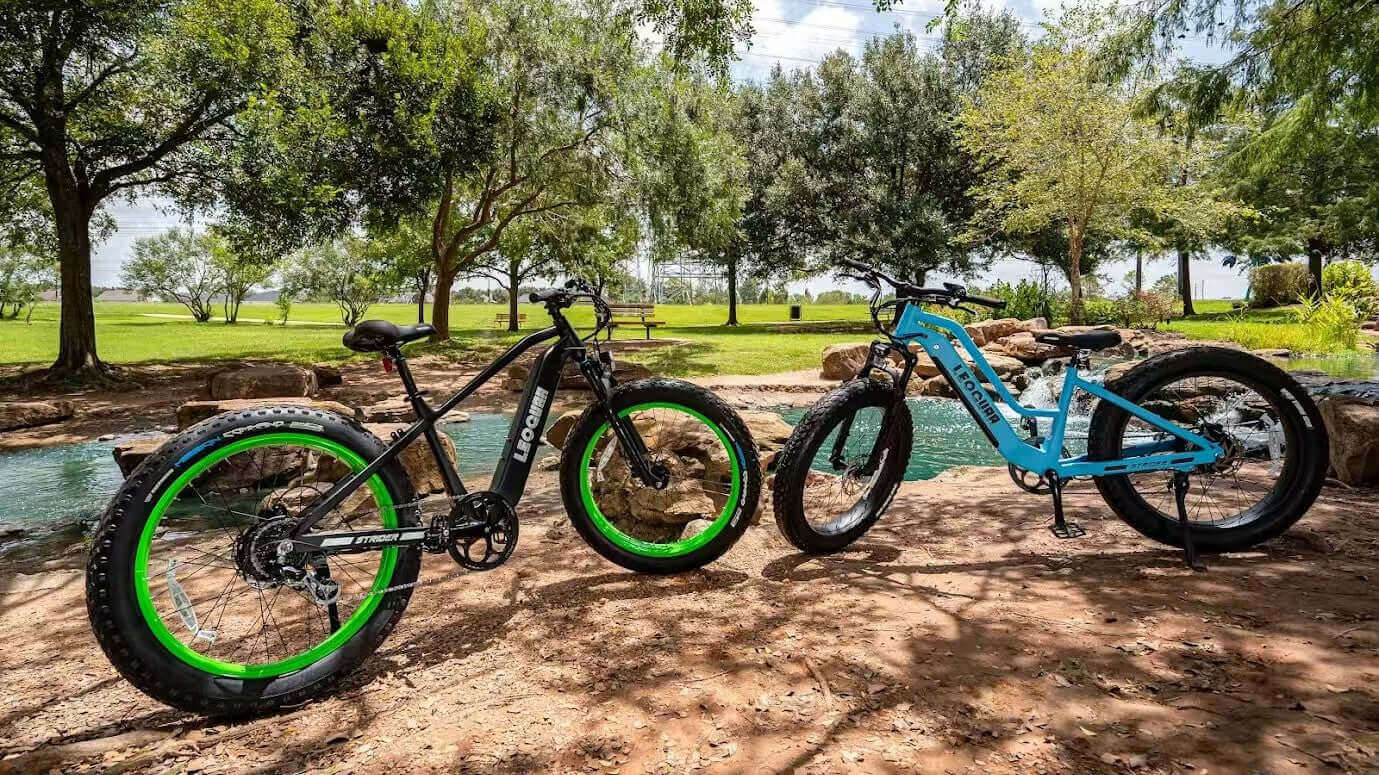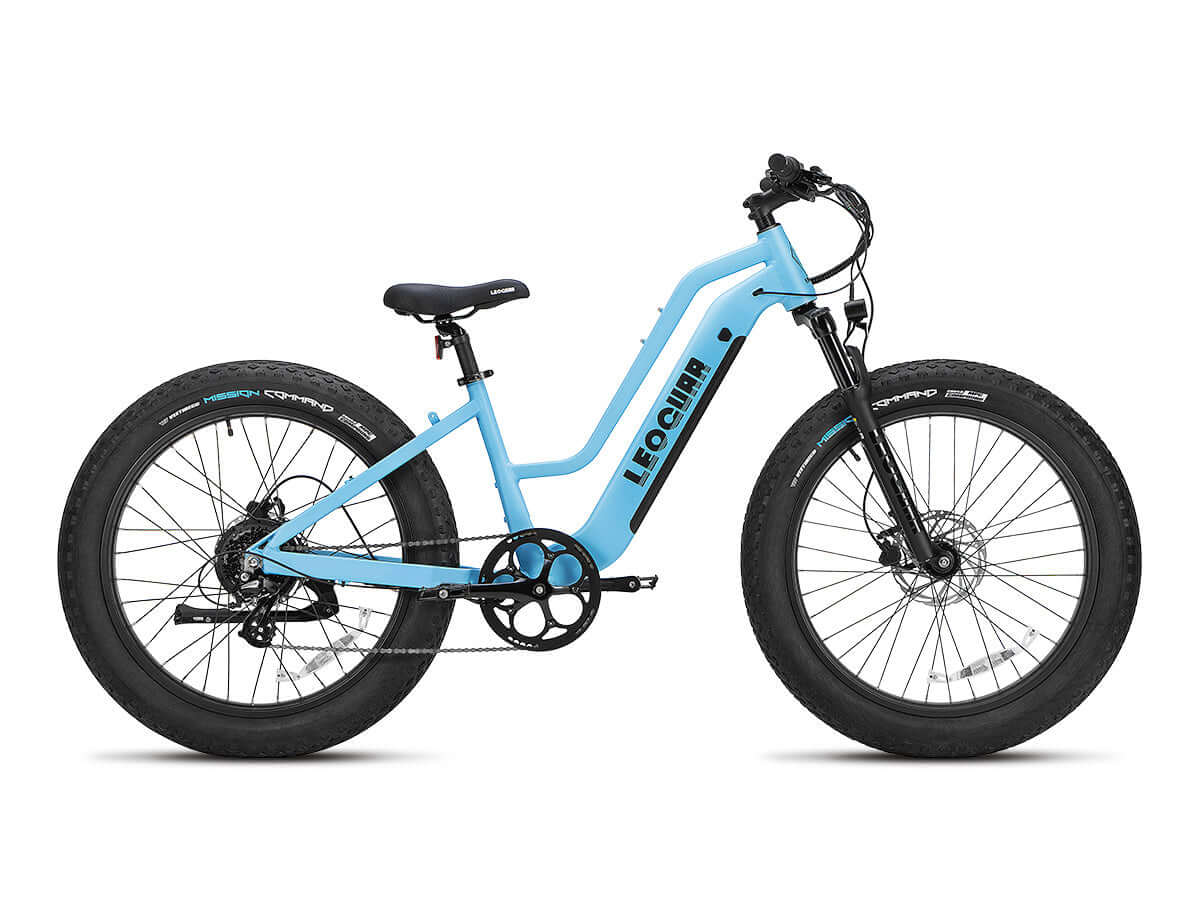
What Are the Classes of E-Bikes? Complete Guide
Shopping for an electric bike can be exciting. But terms like Class 1, Class 2, and Class 3 can be confusing for new buyers. If you're wondering what these classes of e-bikes mean and which one is right for you, you've come to the right place.
This system isn't just random words. It's a crucial framework designed to regulate e-bikes, ensuring safety and clarifying where they can be ridden. It's the key to helping buyers choose the right bike for their needs. We will break down what each class means, who it's for, and how to choose the perfect one for your lifestyle.
Why E-Bike Classes Exist
Before diving into the "what," it's important to understand the "why." The e-bike classification system was created to solve a growing problem: how to regulate these new vehicles.
Without a standard, e-bikes could be lumped in with mopeds or motorcycles. This would subject them to stricter licensing, registration, and insurance laws.
To prevent this and promote e-bike adoption, industry leaders and advocacy groups created a three-tier classification system developed by the bike industry. The primary goals were to ensure rider safety, provide legal clarity for use on roads and trails, and offer a clear guide for consumers and manufacturers.
This system is defined by two key factors: the type of motor assistance and the maximum speed at which the motor provides assistance. This clear framework has been so effective that over 35 U.S. states have now adopted it, creating consistent regulations for riders across the country.
E-Bike Classes at a Glance
For a quick answer to the question "what are the classes of e-bikes?", this table shows the key differences. It's the fastest way to compare the three classes before we explore each one.
| Feature | Class 1 | Class 2 | Class 3 |
|---|---|---|---|
| Pedal Assist (PAS) | Yes | Yes | Yes |
| Throttle | No | Yes | No* |
| Maximum Assisted Speed | 20 mph | 20 mph | 28 mph |
| Motor Activation | Pedaling Only | Pedaling OR Throttle | Pedaling Only |
| Common Use Case | Recreation & Trails | Urban & Accessibility | Commuting & Speed |
| General Trail Access | Widely Permitted | Often Permitted | More Restricted |
*Some areas may have exceptions, but the standard Class 3 model is pedal-assist only.
A Deep Dive into Classes
Understanding the specs is one thing. Understanding the feel and function is another.
Here's a detailed look at the riding experience for each of the different classes of e-bikes and who they are best suited for.
Class 1: The Pedal-Assist Purist
A Class 1 e-bike provides motor assistance only when you are actively pedaling. The assistance cuts off once you reach 20 mph, and there is no throttle. The riding experience is the most natural of the three classes. As a long-time cyclist, I describe it as having a constant tailwind or a pair of super-strong legs.
The motor smoothly amplifies your own effort. You still get a great workout, but hills flatten out and headwinds fade away.
It's your power, just magnified. This is a key reason why it's a popular choice, as it maintains the core cycling experience.
- Who is it for? It's perfect for traditional cyclists who want a boost, mountain bikers who need help on tough climbs, and fitness-focused riders who still want to put in the effort.
- Pros: It offers the most natural riding feel, has the widest legal access to bike paths and MTB trails, and is often lighter and more affordable than other classes.
- Cons: The lack of a throttle means you can't take a break from pedaling, and the 20 mph top speed can feel slow on open roads alongside traffic. It's a combination of a bike's top speed and how that speed is achieved that defines its legal standing.
Class 2: The Versatile All-Rounder
A Class 2 e-bike also has a maximum assisted speed of 20 mph. But it features two ways to engage the motor: pedal-assist and a throttle. The throttle allows you to get power from the motor without pedaling. The throttle is a game-changer for convenience.
From my experience riding in busy cities, it's invaluable for getting a quick start from a standstill at a traffic light. It lets you get ahead of cars without fumbling with gears.
It's also great for a quick, pedal-free boost up a short, steep ramp or when you're simply too tired to pedal home. This class offers the ultimate choice: pedal for exercise or use the throttle for an effortless cruise.
- Who is it for? This class is ideal for urban commuters navigating stop-and-go traffic, delivery riders making frequent stops, and anyone with physical limitations or who might want the safety net of a pedal-free option.
- Pros: Unmatched versatility, excellent for city riding, and the throttle is a great backup if you're fatigued.
- Cons: The throttle can drain the battery more quickly, and Class 2 bikes can be restricted on some multi-use trails that only permit Class 1.
Class 3: The Speed Commuter
A Class 3 e-bike is a pedal-assist-only bike (like Class 1) but with a much higher maximum assisted speed of 28 mph. These are often called "speed pedelecs."
Riding a Class 3 e-bike is about speed and efficiency. The experience is exciting, allowing you to keep pace with urban traffic and significantly shorten commute times.
I've turned a 45-minute car commute into a 30-minute bike ride on a Class 3. However, it's important to note that reaching and maintaining 28 mph still requires significant pedaling effort from the rider. The motor assists you to that speed, it doesn't just hold you there effortlessly.
- Who is it for? It's the top choice for long-distance commuters looking to replace a car, riders in hilly regions who want more power to maintain speed on inclines, and enthusiasts who crave the fastest legal road experience on two wheels.
- Pros: The fastest legal class of e-bike, excellent for covering long distances quickly, and a true car replacement for many.
- Cons: It has the most restrictive legal status and is often prohibited on bike paths and multi-use trails. Riders must be at least 16 to operate a Class 3 e-bike, and helmets are often mandatory. They are also typically the most expensive.
Choosing Your Class
Now that you understand the different classes of e-bikes, let's match them to your lifestyle. Find your rider profile below to see our expert recommendation.
-
Profile 1: The Weekend Trail Explorer
- Your Goal: You want to explore local parks, ride on gravel paths, and tackle moderate mountain bike trails. You love the feeling of cycling and want to enhance, not replace, it.
- Our Recommendation: Class 1. Its wide acceptance on trails and natural pedaling feel make it the perfect companion for adventure while respecting trail rules.
-
Profile 2: The Downtown Commuter
- Your Goal: You have a 5-mile urban commute with lots of traffic lights, intersections, and a few hills. You need to get to work quickly and without breaking a sweat.
- Our Recommendation: Class 2. The throttle is a lifesaver for stop-and-go traffic, giving you instant acceleration from a stop and offering a welcome break when you need it.
-
Profile 3: The Suburban Super-Commuter
- Your Goal: You're looking to replace your car for a 15-mile commute, primarily on roads with bike lanes. Speed and efficiency are your top priorities to minimize travel time.
- Our Recommendation: Class 3. The 28 mph assist will help you keep pace with traffic flow and turn a long ride into a fast, enjoyable journey.
-
Profile 4: The Casual Cruiser & Errand Runner
- Your Goal: You want an easy, fun, and accessible option for leisurely rides around the neighborhood, trips to the farmer's market, and carrying groceries.
- Our Recommendation: Class 2. The combination of easy-to-use pedal-assist and a "just in case" throttle offers maximum convenience and fun for casual trips.
Navigating E-Bike Laws
Owning an e-bike is one thing. Knowing where you can legally ride it is another. Understanding the general rules of the road is crucial for a safe and enjoyable experience. First and foremost, a critical disclaimer: Laws vary significantly by state, county, and even by individual park or trail system.
Always check local regulations before you ride. With that said, here is a general overview of where each class is typically permitted:
- Class 1: These e-bikes enjoy the broadest access. They are generally allowed on any paved surface that a traditional bicycle is, including streets, bike lanes, and most multi-use bike paths.
- Class 2: Because they share the same top speed as Class 1, these e-bikes are typically allowed in the same places, including streets and bike lanes. However, the throttle can sometimes lead to restrictions on multi-use paths and trails where some managers want to ensure all users are actively pedaling.
- Class 3: Due to their higher speed, Class 3 e-bikes face the most restrictions. They are almost always welcome on public roads and in on-street bike lanes, but they are frequently prohibited from multi-use paths, bike-only trails, and pedestrian walkways to avoid speed conflicts.
Beyond access, be aware of other rules. As mentioned, Class 3 e-bikes often have age (16+) and mandatory helmet requirements. By understanding what the classes of e-bikes are, you can not only choose the right model for your needs but also ride it confidently and responsibly.
Frequently Asked Questions
Q: Can I convert my regular bike to a different e-bike class?
A: While you can add e-bike conversion kits to regular bikes, the resulting classification depends on the motor power and speed capabilities you install. Make sure any conversion meets local legal requirements for your intended class.
Q: Do I need a license or registration for any class of e-bike?
A: In most U.S. states, none of the three e-bike classes require a license or registration. However, some states may have specific requirements for Class 3 e-bikes, so always check your local laws.
Q: Can children ride Class 1 and Class 2 e-bikes?
A: Age requirements vary by state, but generally, children can ride Class 1 and Class 2 e-bikes with adult supervision. Class 3 e-bikes typically require riders to be at least 16 years old.
Q: What happens if I ride faster than the class speed limit?
A: The motor assistance will cut off at the class speed limit, but you can still pedal faster using your own power. The speed limits only apply to when the motor provides assistance.
Q: Are there insurance requirements for different e-bike classes?
A: Most states don't require insurance for any e-bike class, treating them like regular bicycles. However, you may want to check if your homeowner's or renter's insurance covers e-bike theft or damage.









































Leave a comment